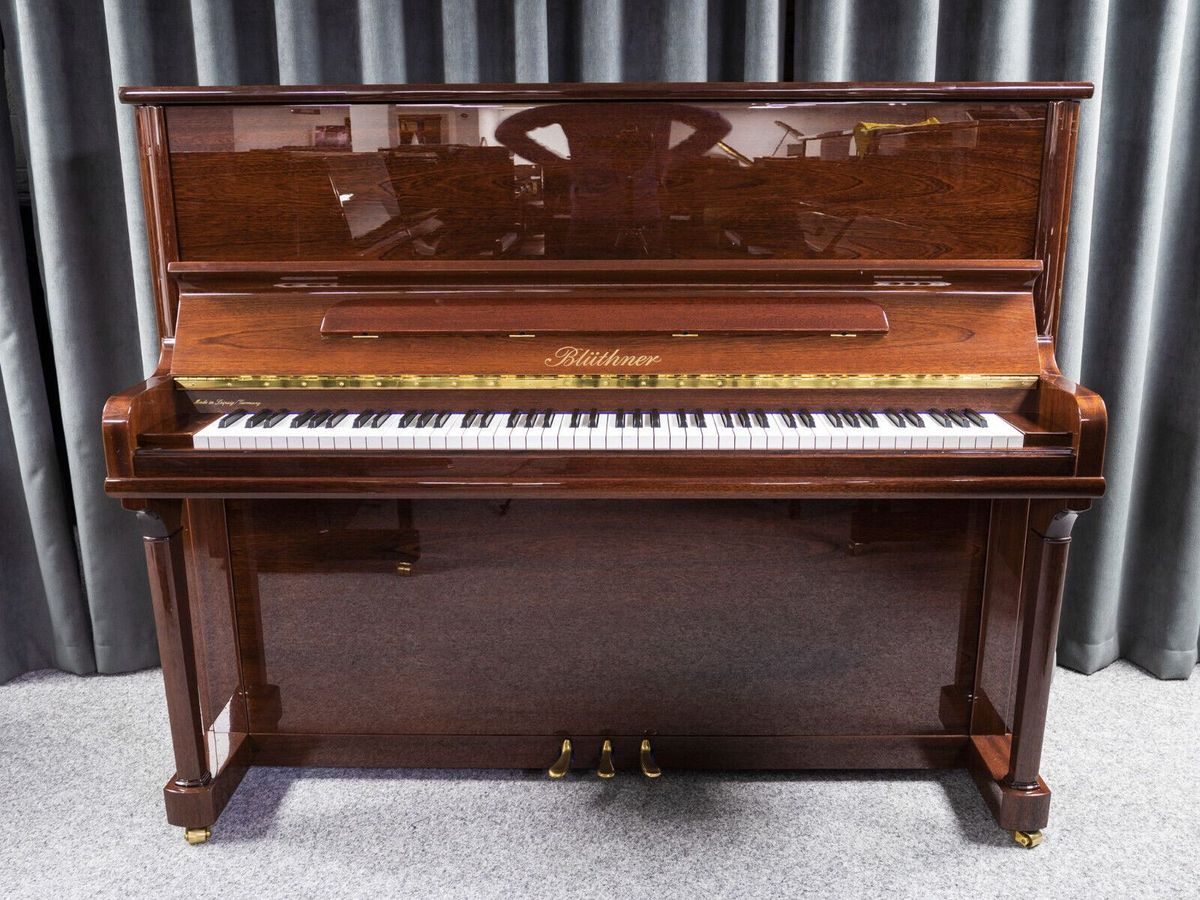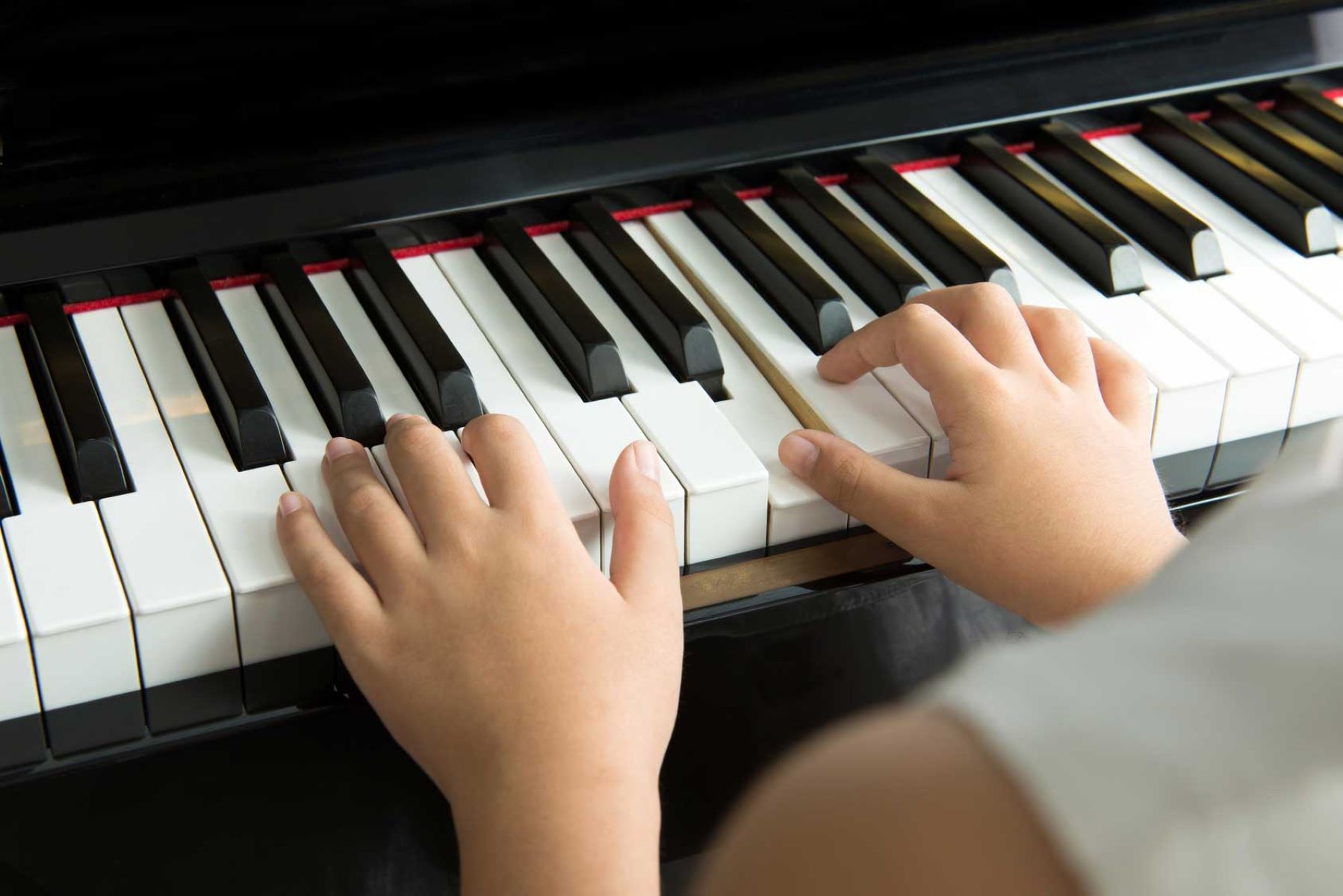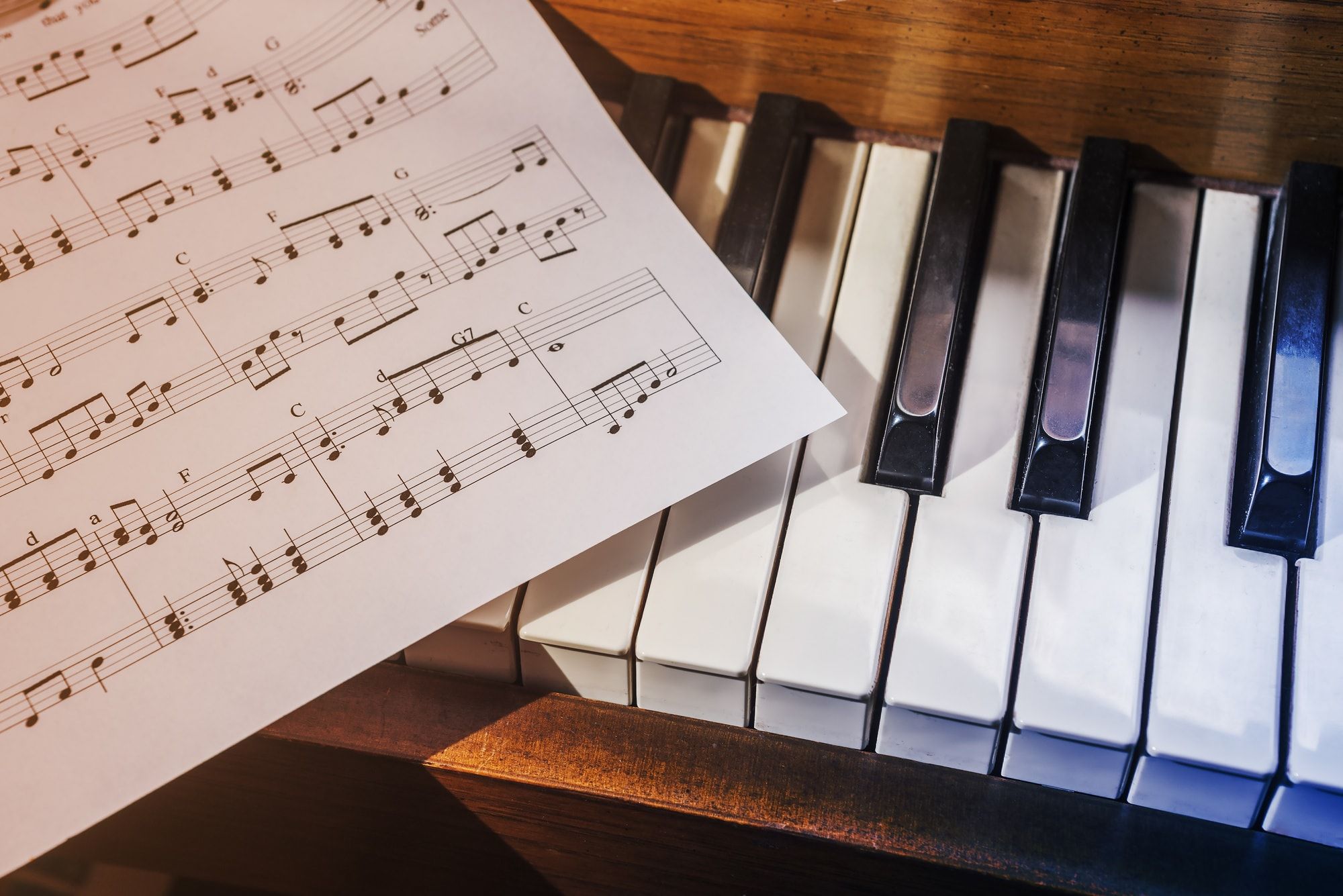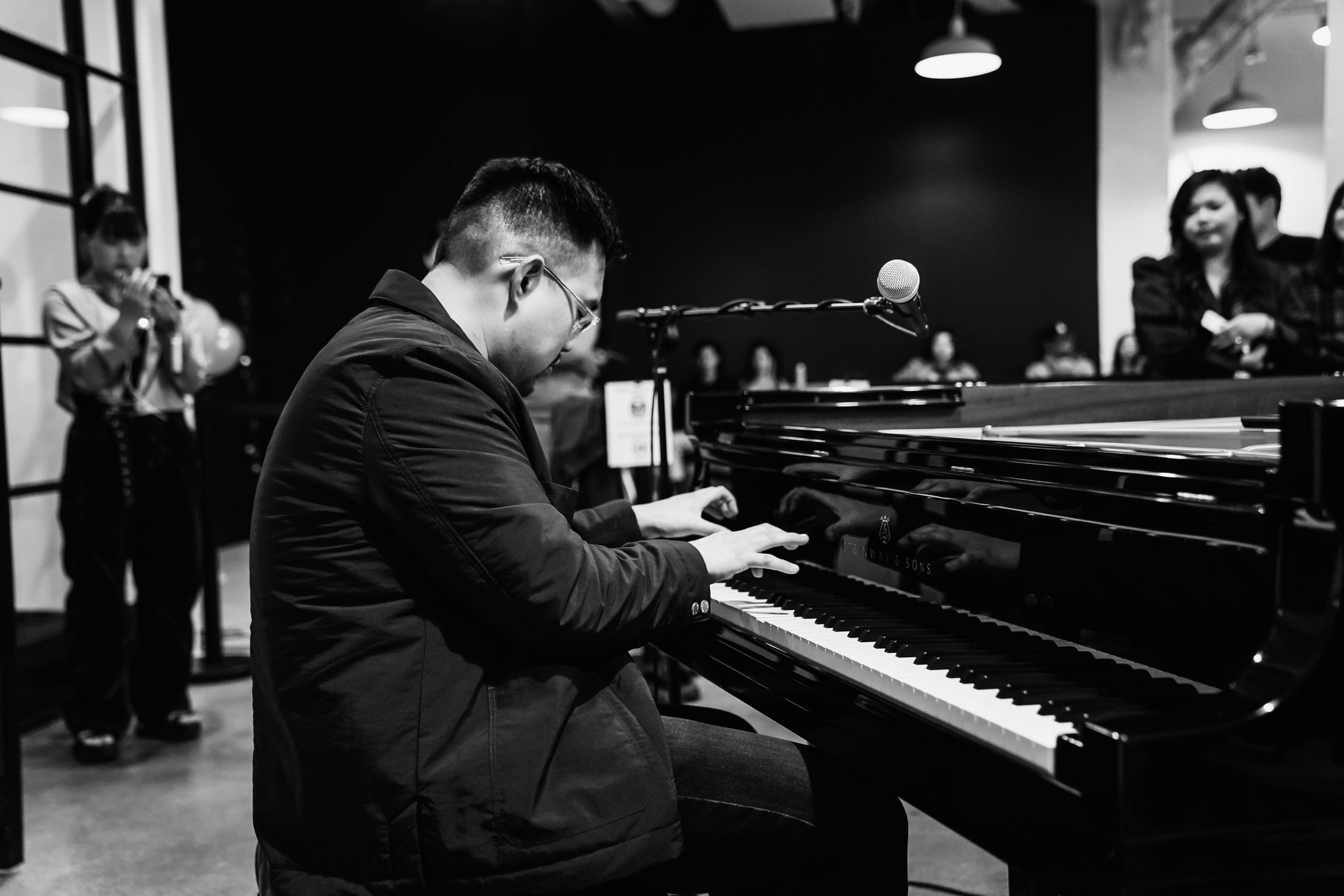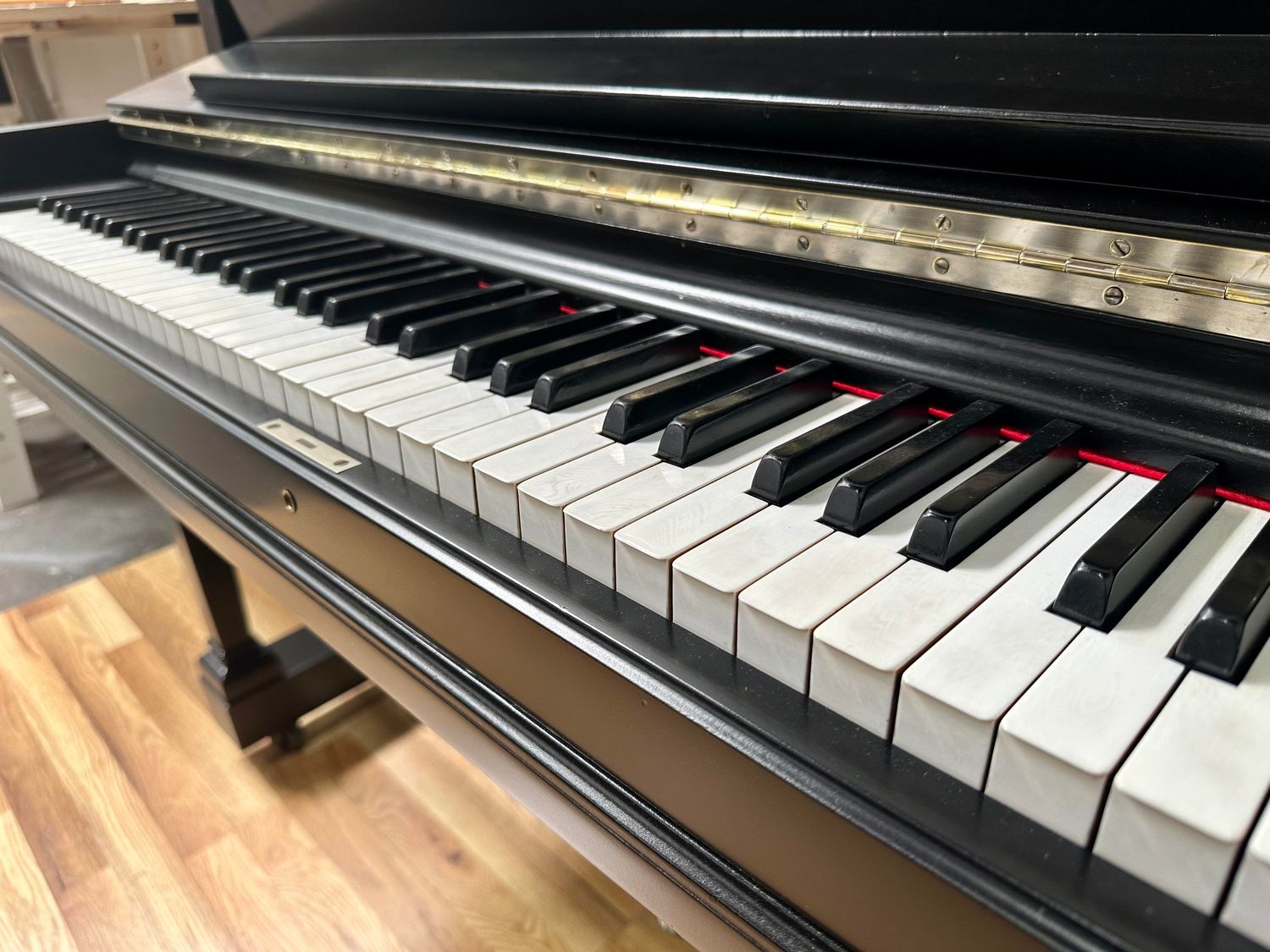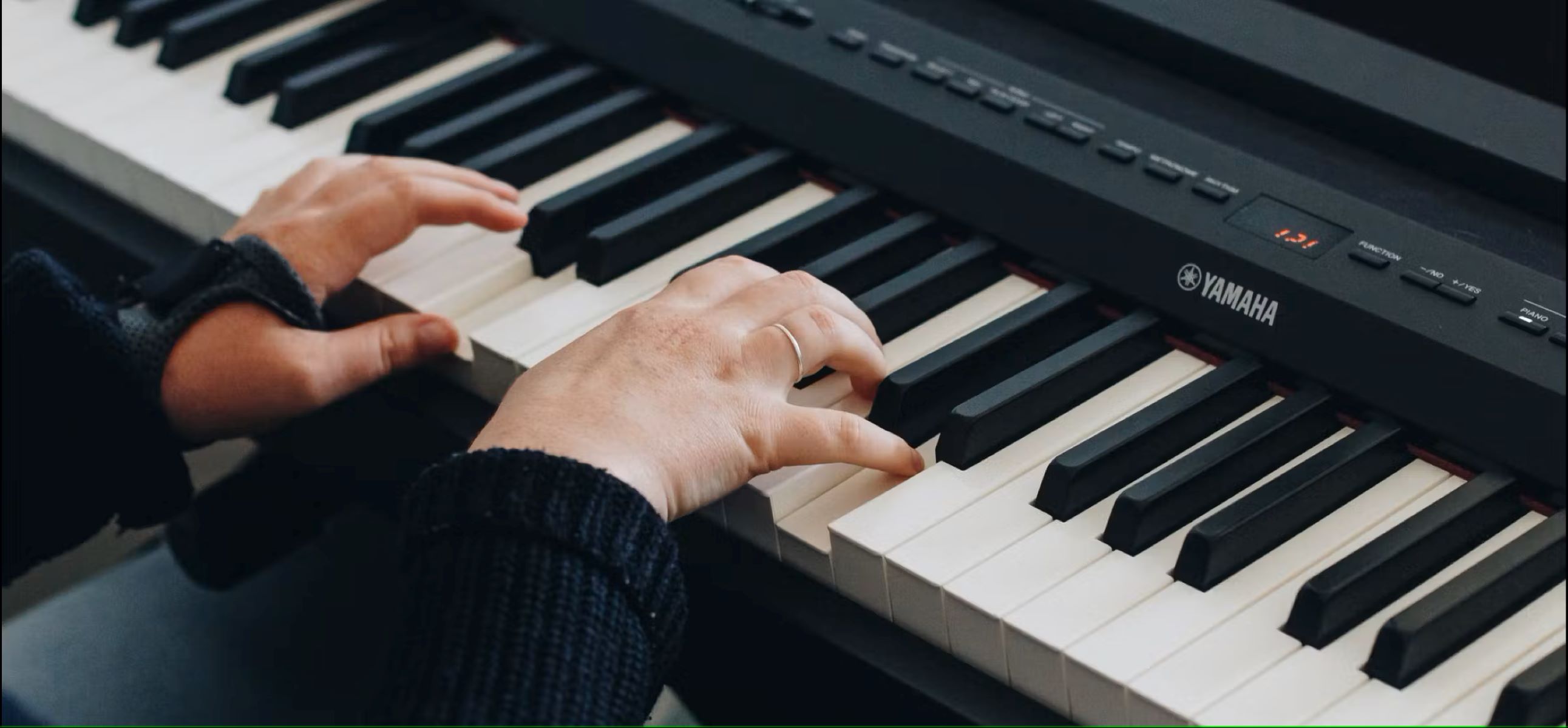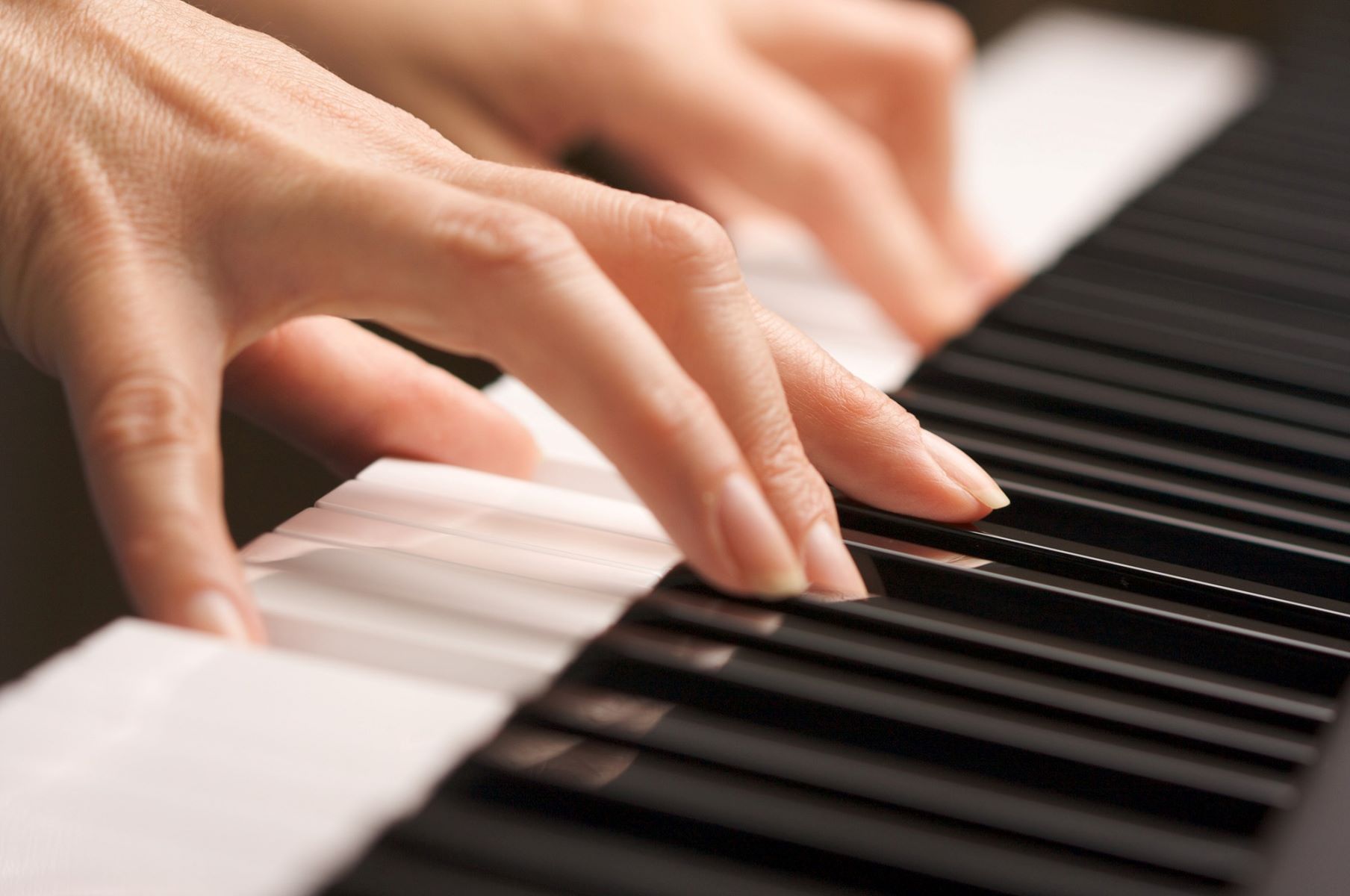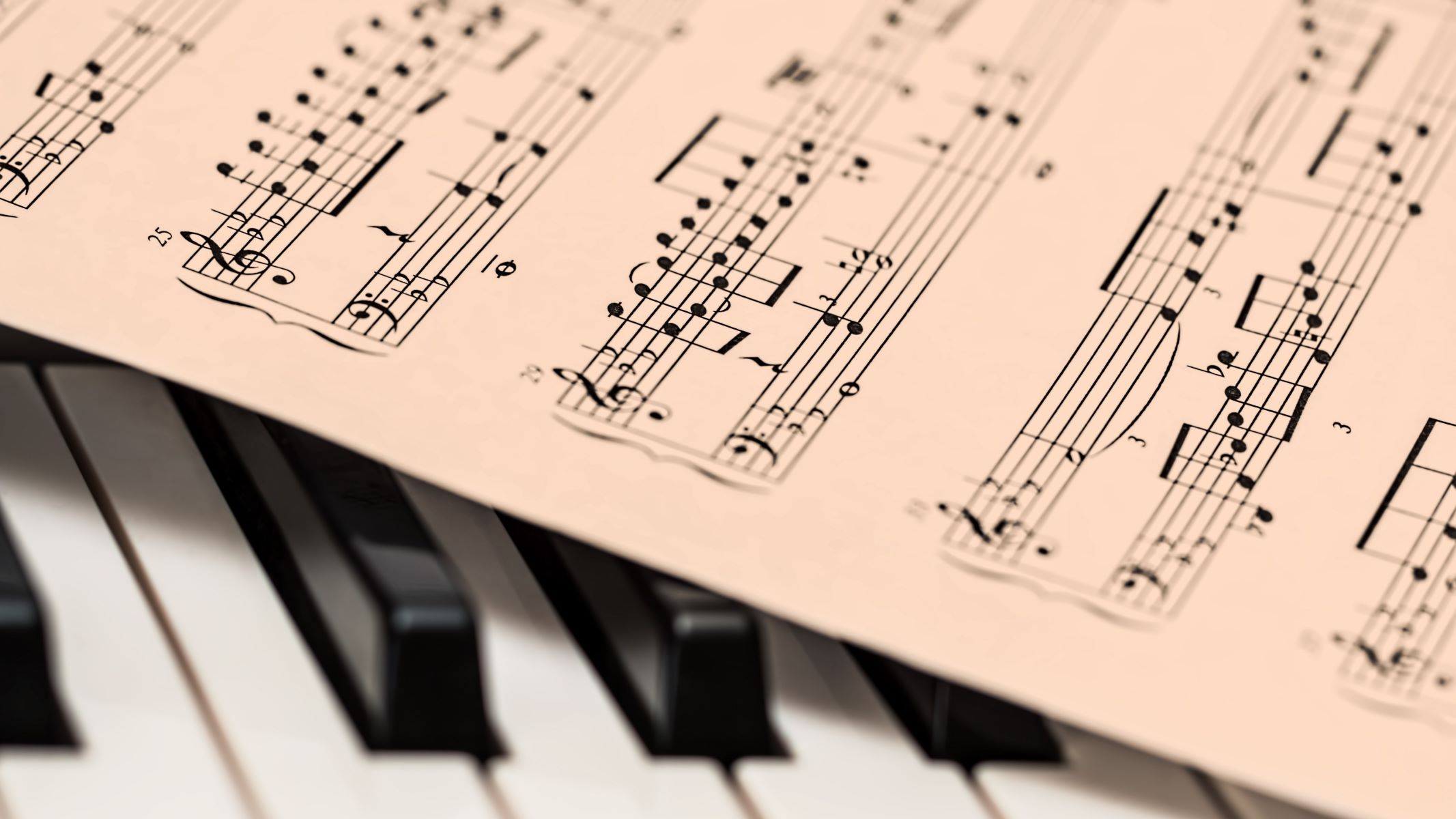Home>Instruments>Piano>How To Gliss On Piano


Piano
How To Gliss On Piano
Published: February 11, 2024
Learn how to gliss on piano with our step-by-step guide. Master the technique and add flair to your piano playing. Discover tips and tricks for achieving a smooth and impressive glissando.
(Many of the links in this article redirect to a specific reviewed product. Your purchase of these products through affiliate links helps to generate commission for AudioLover.com, at no extra cost. Learn more)
Table of Contents
Understanding the Glissando Technique
The glissando, a captivating and expressive technique in piano playing, adds a touch of elegance and flair to musical compositions. Derived from the Italian word "glissare," meaning "to slip," the glissando involves smoothly and rapidly sliding the fingers across the piano keys, producing a seamless cascade of notes. This technique is often associated with jazz, contemporary, and romantic music, where it serves as a means of embellishing melodies and adding a sense of drama to musical passages.
Mastering the glissando requires not only technical proficiency but also a keen understanding of musical expression. It offers pianists a unique opportunity to infuse their performances with emotion and spontaneity, captivating audiences and adding depth to musical narratives. Whether used to evoke a sense of longing, exuberance, or melancholy, the glissando is a versatile tool in the pianist's repertoire, enabling them to convey a wide range of emotions through their playing.
In this comprehensive guide, we will delve into the art of glissing on the piano, exploring the intricacies of this technique and providing valuable insights for pianists looking to incorporate it into their repertoire. From understanding the mechanics of the glissando to mastering its execution, this article will equip you with the knowledge and techniques needed to infuse your piano playing with the captivating allure of the glissando. Whether you are a seasoned pianist or just beginning your musical journey, embracing the glissando will undoubtedly enhance your expressive capabilities and unlock new dimensions of musical creativity.
Understanding the Glissando Technique
The glissando is a captivating and expressive piano technique that adds a touch of elegance and flair to musical compositions. Derived from the Italian word “glissare,” meaning “to slip,” the glissando involves smoothly and rapidly sliding the fingers across the piano keys, producing a seamless cascade of notes. This technique is often associated with jazz, contemporary, and romantic music, where it serves as a means of embellishing melodies and adding a sense of drama to musical passages.
Mastering the glissando requires not only technical proficiency but also a keen understanding of musical expression. It offers pianists a unique opportunity to infuse their performances with emotion and spontaneity, captivating audiences and adding depth to musical narratives. Whether used to evoke a sense of longing, exuberance, or melancholy, the glissando is a versatile tool in the pianist’s repertoire, enabling them to convey a wide range of emotions through their playing.
At its core, the glissando is a gesture of fluidity and grace, allowing pianists to create a seamless transition between notes, akin to a painter effortlessly blending colors on a canvas. The technique can be tailored to suit various musical styles and moods, making it a valuable asset for pianists across genres.
By understanding the mechanics and nuances of the glissando, pianists can harness its expressive potential to elevate their performances and breathe life into musical compositions. In the following sections, we will explore the preparatory steps and execution of the glissando, equipping pianists with the knowledge and techniques needed to incorporate this captivating technique into their repertoire.
Preparing to Gliss
Before embarking on the exhilarating journey of executing a glissando on the piano, it is essential to lay the groundwork for a seamless and captivating performance. Preparing to gliss involves a combination of physical, mental, and musical considerations, each contributing to the successful execution of this expressive technique.
First and foremost, it is crucial to position oneself at the piano in a manner that facilitates fluid movement across the keys. Sit comfortably at the piano bench, ensuring that your posture allows for unrestricted movement of the arms and hands. Relax your shoulders and arms, maintaining a natural and poised position that enables agility and dexterity during the glissando.
Next, familiarize yourself with the specific passage in the music where the glissando is indicated. Take note of the starting and ending points of the glissando, paying attention to the intended speed and dynamic expression. Understanding the context in which the glissando appears will inform your approach to the technique, allowing you to align your performance with the overarching musical narrative.
Physically, it is beneficial to position your hand and fingers in a manner that facilitates smooth movement across the keys. Depending on the length of the glissando and the span of the notes involved, you may need to adjust the positioning of your hand to accommodate the distance to be covered. Experiment with different finger placements to find the most comfortable and efficient configuration for the specific glissando passage.
Mentally, prepare to embrace the expressive nature of the glissando. Consider the emotional context of the music and envision how the glissando can enhance the overall impact of the passage. Whether it is a poignant embellishment or a dramatic flourish, mentally immersing yourself in the musical narrative will inform your interpretation of the glissando, infusing it with depth and intention.
Finally, take a moment to mentally prepare for the physical action of the glissando. Visualize the trajectory of your fingers across the keys, envisioning a seamless and fluid motion that translates into a captivating cascade of notes. By mentally rehearsing the glissando, you can cultivate a sense of confidence and readiness, setting the stage for a compelling and expressive performance.
Executing the Glissando
With the preparations in place, it is time to delve into the exhilarating act of executing a glissando on the piano. This transformative technique, when performed with finesse and intention, has the power to captivate listeners and imbue musical passages with a sense of drama and fluidity.
As you approach the designated passage for the glissando, adopt a poised and focused posture at the piano. Ensure that your hands are relaxed yet poised, ready to embark on the seamless journey across the keys. Take a moment to center yourself, allowing your mind to align with the expressive intent of the glissando.
When initiating the glissando, it is essential to maintain a sense of fluidity and continuity throughout the motion. Begin by lightly resting your fingers on the starting note, poised to initiate the rapid slide across the keys. As you initiate the movement, ensure that your fingers remain in close contact with the keys, facilitating a smooth and uninterrupted transition from the starting note to the concluding note of the glissando.
The speed of the glissando should align with the musical context, adding a dynamic and expressive flourish to the passage. Whether performed with a sense of urgency or a lingering, emotive quality, the speed of the glissando contributes to its overall impact and resonance within the music.
As your fingers glide across the keys, maintain a sense of control and intention, allowing each note to resonate clearly and distinctly. While the glissando is characterized by its rapid and fluid nature, precision and clarity are paramount to ensuring that each note contributes to the overarching musical narrative.
Throughout the execution of the glissando, remain attuned to the emotional nuances of the music, infusing the technique with a sense of expression and artistry. Embrace the transformative power of the glissando, allowing it to embellish the musical passage with its captivating allure.
Upon reaching the concluding note of the glissando, ensure a seamless transition into the subsequent musical phrases, maintaining the momentum and energy established by the technique. Embrace the lingering resonance of the glissando, allowing it to reverberate within the musical landscape and leave a lasting impression on the listener.
By approaching the execution of the glissando with poise, intention, and musical sensitivity, pianists can unlock the full expressive potential of this captivating technique, enriching their performances with its evocative allure.
Tips for Mastering the Glissando
Mastering the glissando technique requires a combination of technical proficiency, musical sensitivity, and expressive finesse. Here are valuable tips to enhance your mastery of the glissando, allowing you to infuse your piano performances with captivating fluidity and expressive allure:
- Hand Positioning: Experiment with different hand positions to find the optimal configuration for executing the glissando with ease and fluidity. Ensure that your fingers are poised to glide effortlessly across the keys, facilitating a seamless transition between notes.
- Dynamic Control: Pay attention to the dynamic nuances of the glissando, adjusting the speed and intensity to align with the musical context. Whether it calls for a rapid, exhilarating glissando or a gentle, emotive cascade of notes, dynamic control enhances the expressive impact of the technique.
- Fluid Motion: Cultivate a sense of fluidity in your hand and finger movements, allowing the glissando to unfold with grace and continuity. Avoid any abrupt or jerky motions, aiming for a seamless and uninterrupted slide across the keys.
- Emotional Connection: Immerse yourself in the emotional landscape of the music, allowing the glissando to serve as a conduit for expressive storytelling. Infuse each glissando with a sense of intention and emotional resonance, enriching the musical narrative with depth and sensitivity.
- Practice with Musical Context: Integrate the glissando into specific musical passages, practicing within the context of the surrounding notes and phrases. This approach allows you to seamlessly incorporate the glissando into your repertoire, ensuring its seamless integration within the broader musical framework.
- Relaxed Technique: Maintain a relaxed and supple hand and wrist posture when executing the glissando, allowing for effortless movement and agility. Tension in the hands can impede the fluidity of the glissando, so focus on cultivating a relaxed and nimble technique.
- Artistic Interpretation: Embrace the artistic potential of the glissando, viewing it as a means of personal expression and musical storytelling. Experiment with different approaches to the glissando, allowing your interpretations to evolve and resonate with emotional depth.
- Listening and Feedback: Engage in active listening to recordings featuring captivating glissando performances, drawing inspiration from renowned pianists and composers. Seek feedback from mentors or fellow musicians to gain valuable insights into refining your glissando technique.
By incorporating these tips into your practice and performance routines, you can elevate your mastery of the glissando, harnessing its expressive potential to enrich your musical interpretations and captivate audiences with its enchanting allure.
Conclusion
The glissando stands as a testament to the expressive and transformative power of piano technique, offering pianists a captivating means of infusing their performances with fluidity, drama, and emotional resonance. Through its seamless cascade of notes and evocative allure, the glissando enriches musical compositions, adding depth and spontaneity to the pianist’s repertoire.
As pianists embark on the journey of mastering the glissando, they delve into a realm of artistic expression and technical finesse, honing their ability to convey a wide spectrum of emotions through their playing. From the poignant elegance of a gentle glissando to the exhilarating fervor of a rapid cascade of notes, the glissando serves as a versatile tool for storytelling and musical embellishment.
By understanding the mechanics, nuances, and expressive potential of the glissando, pianists can unlock new dimensions of creativity and artistic interpretation. The seamless transition between notes, the dynamic control, and the emotional resonance of the glissando converge to elevate musical narratives, captivating audiences and imbuing performances with a sense of spontaneity and allure.
As pianists immerse themselves in the art of glissing, they embark on a journey of self-discovery and musical exploration, embracing the fluidity and grace inherent in this captivating technique. Whether interpreting jazz standards, classical compositions, or contemporary pieces, the glissando serves as a timeless embellishment, enriching musical passages with its enchanting allure.
Ultimately, the glissando transcends technical proficiency, inviting pianists to infuse their performances with personal expression and storytelling. It embodies the essence of musical fluidity, allowing pianists to seamlessly navigate the intricate tapestries of melody and harmony, leaving an indelible imprint on the listener’s musical experience.
As pianists continue to refine their mastery of the glissando, they embark on a journey of artistic evolution, embracing the expressive potential of this captivating technique. With each fluid motion across the keys, the glissando breathes life into musical compositions, inviting audiences to embark on a captivating sonic journey defined by grace, emotion, and the transformative power of the piano’s expressive capabilities.

